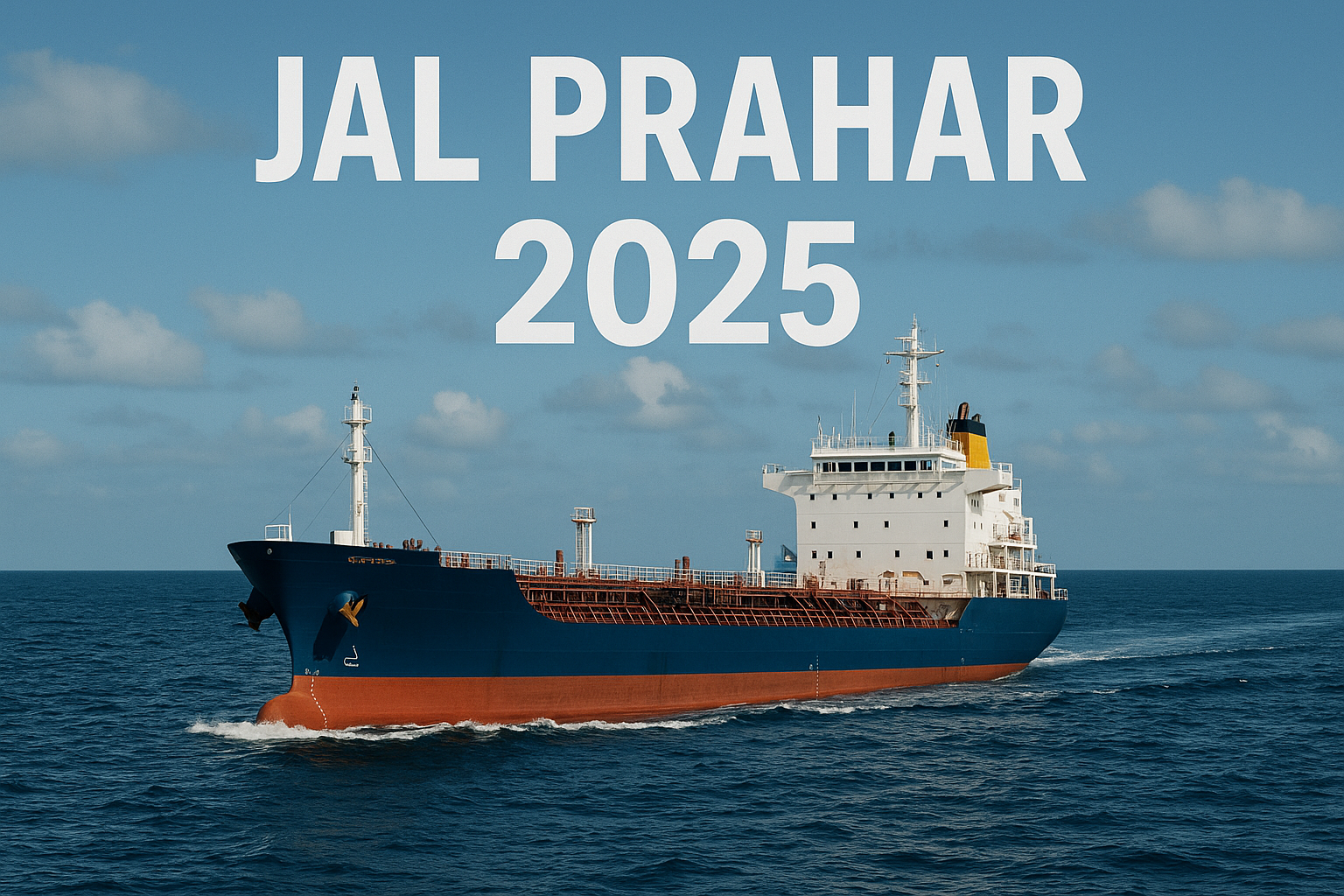Introduction
The Indian Navy and Army successfully conducted the biannual joint amphibious exercise ‘Jal Prahar 2025’ along India’s eastern coast. It was organised from 16 to 23 September 2025, highlighting India’s focus on strengthening inter-service cooperation, operational readiness, and coastal defence strategies.
1. Background of Jal Prahar
- Nature: A large-scale amphibious exercise, held every two years.
- Participants: Primarily the Indian Navy and Indian Army.
- Objective: To test joint planning, coordination, and execution of amphibious operations (troop landings from sea to shore).
- Strategic Relevance: Enhances India’s maritime security preparedness, especially on the eastern seaboard which faces major strategic challenges (Bay of Bengal, Andaman Sea, South-East Asia).
2. Exercise Structure (Two Phases)
(a) Harbour Phase – Visakhapatnam (16–20 Sept 2025)
Activities Conducted:
- Induction & integration of Army troops onboard INS Gharial (Magar-class amphibious ship).
- Training & orientation: Familiarisation with shipboard life, safety briefings, and operational rehearsals.
- Coordination drills: Tabletop exercises to finalise planning and SOPs.
- Sports & cultural interactions: To build camaraderie and strengthen trust between Army and Navy personnel.
Significance: Prepared troops mentally and physically for the upcoming Sea Phase. Ensured seamless coordination before live drills.
(b) Sea Phase – Off Kakinada (21–23 Sept 2025)
Major Activities:
- Hard beaching: INS Gharial tested its beach landing capability.
- Landing Craft Assault (LCA) deployment: Carried troops and equipment from ship to shore.
- Mechanised infantry operations: Deployment of BMP amphibious infantry fighting vehicles.
- Live tactical manoeuvres: Conducted under realistic combat conditions to validate operational readiness.
Outcome: Joint SOPs were validated, ensuring that both services can operate seamlessly during real combat missions.
3. Significance of Inter-Service Synergy
- Operational Necessity: Amphibious warfare requires tight coordination between sea and land forces.
- Enhanced Communication: Improved information sharing and command structures between the Army & Navy.
- Unified Combat Approach: Promotes understanding of each service’s strengths & limitations.
- Strategic Defence: Boosts preparedness to secure India’s eastern maritime borders from external threats, piracy, or hostile incursions.
4. Technological and Tactical Highlights
Modern Platforms Used:
- INS Gharial (Magar-class amphibious ship).
- Landing Craft Assault vessels for rapid troop movement.
- BMP amphibious infantry fighting vehicles.
Tactical Advancements:
- Validated joint SOPs under combat-like conditions.
- Improved beach landing techniques for mechanised infantry.
- Tested integration of naval firepower with land-based mechanised forces.
Future Preparedness: Helps adapt to emerging maritime threats such as grey-zone warfare, littoral combat, and disaster-response scenarios.
5. Strategic Importance for India
- Eastern Seaboard Focus: Covers critical trade and energy routes in the Bay of Bengal.
- Power Projection: Enhances India’s ability to project force in the Indo-Pacific.
- Disaster Relief: Amphibious capability is vital for HADR (Humanitarian Assistance and Disaster Relief) during natural calamities.
- Regional Security Role: Strengthens India’s position as a net security provider in the Indian Ocean Region.
6. Key Takeaways for UPSC
- Jal Prahar 2025 = Biannual Navy-Army joint amphibious exercise.
- Location: Eastern Coast (Visakhapatnam & Kakinada).
- Duration: 16–23 September 2025 (two phases – Harbour + Sea).
- Aim: Strengthen interoperability & amphibious warfare capability.
- Platforms Used: INS Gharial, LCAs, BMP amphibious vehicles.
- Significance: Boosts strategic defence, inter-service synergy, tactical readiness, and HADR potential.
7. Possible UPSC Questions
(a) Prelims-Oriented
- Jal Prahar is a joint exercise between:
- (a) India & USA
- (b) Army & Navy ✅
- (c) Navy & Air Force
- (d) India & Japan
(b) Mains-Oriented
“Discuss the significance of inter-service joint exercises like Jal Prahar for India’s maritime security and strategic preparedness.”
8. Conclusion
Jal Prahar 2025 is a demonstration of India’s evolving amphibious warfare capability, highlighting the critical role of Army-Navy cooperation. By testing modern platforms, validating SOPs, and enhancing inter-service understanding, it strengthens India’s defence posture and ensures readiness for both combat and humanitarian missions in the Indo-Pacific.







